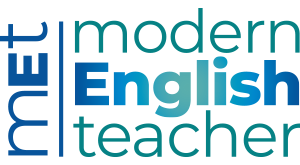One of the features of demand-high teaching whichJim Scrivener and Adrian Underhill invited us to discuss in Issue 85 of ETp was a recognition that our studentsmay well be capable of far more than we typically ask of them.
I was reminded of this when reading our main feature for Issue 103, in whichGail Ellis and Nayr Ibrahim reject the idea that young children donot possess the cognitive maturity to reflect on their learning,asserting that children are perfectly capable of this and are, infact, naturally competent and insightful commentators on theirown experiences of learning. Gail and Nayr recommend that weintroduce reviewing and reflection in young learner classes, solong as it is done in a climate of mutual respect and within anatmosphere that is inclusive and cooperative.
In the fourth in their series on preparing students for the IELTS exam, Louis Rogers and Nick Thorner argue that it is not enoughsimply to teach students the language required to talk aboutcause and effect. They believe that teachers need to go furtherthan this, in order to ensure that their students actuallyunderstand the concept and are sufficiently skilled in thethought processes necessary to identify when an exam questionis asking them to identify and evaluate cause and effect.
Trev Hill recommends that we expect more of our students when it comes to drama activities. He finds that going beyond simpleclassroom roleplays, and involving the students in longer-termtheatre projects brings dividends in terms of the development oftheir language, their social skills and their willingness toparticipate actively in their own learning.
Other contributors to this issue suggest that we expect rathermore of our materials, or add a new dimension to them. MarkHeffernan and David Byrne explore ways in which we can exploit reading and listening texts to the absolute maximum.Ee Loon Chwa describes how he enhances printed texts that are clearly meant to be spoken by using Voki, an onlinetext-to-speech program with different voice options. Thistransforms them from writing on the page into proper spokentexts. Simon Mumford adds diagrams and word puzzles to his explanations of language and structure. Jamie Keddie adds video to his speaking activities, using short videos of his friendsdoing the same speaking task that he sets his students. Thisgives the students something immediate to talk about, and alsoprovides a springboard for their own ideas.
In our new competition, we invite you to challenge yourstudents to go a bit further in their learning and to produce ashort video, based on a story provided by Jamie Keddie.



